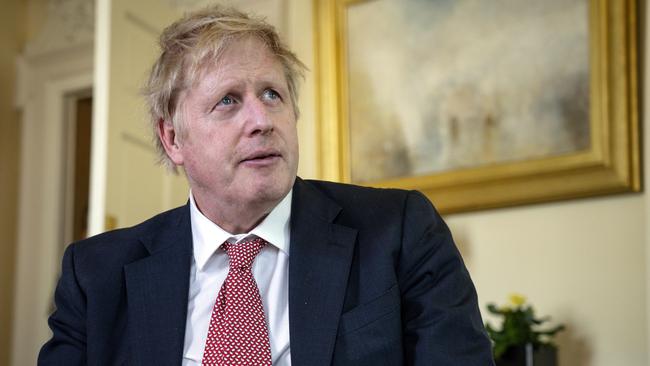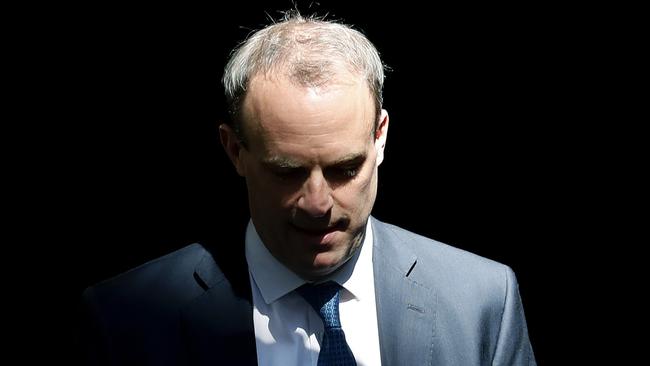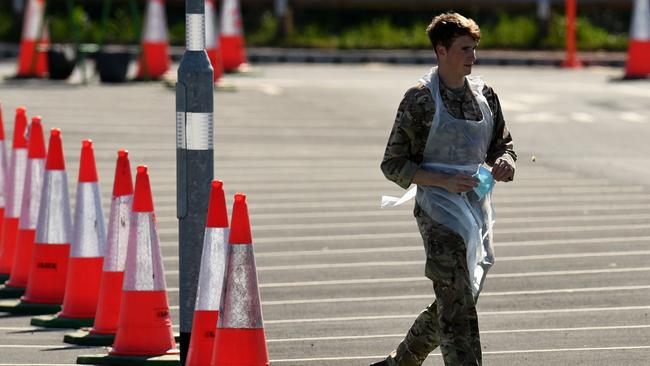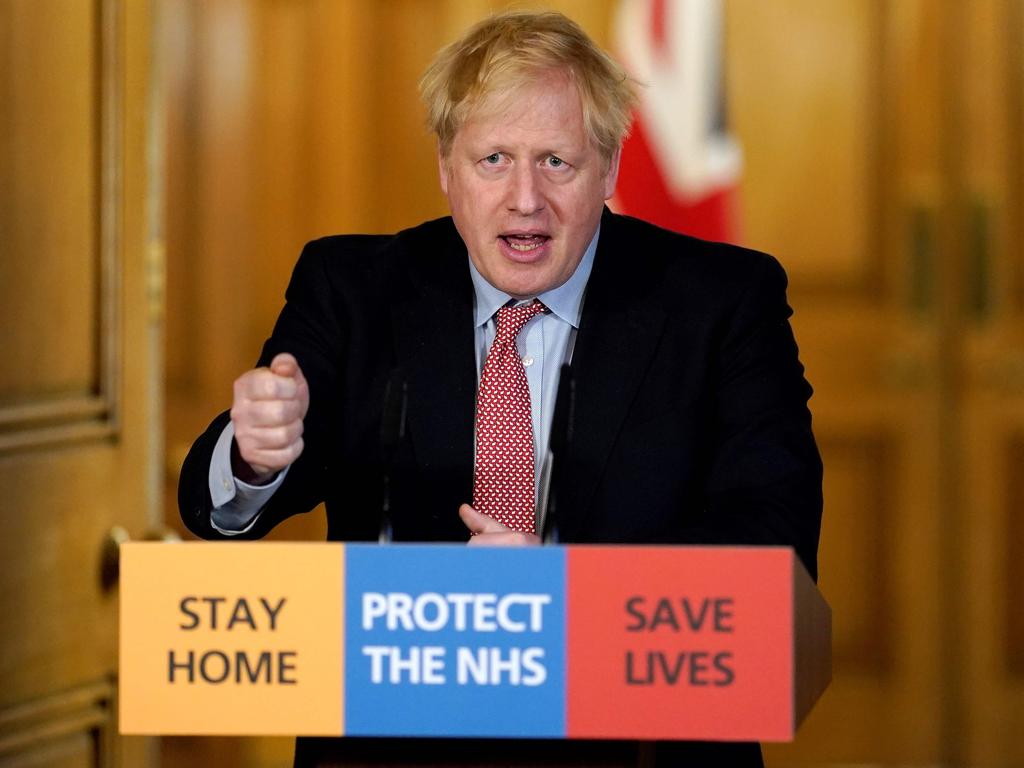Boris Johnson coming back to make the hardest decisions of his life
The British leader faces the ‘political calculus of life and death’, after his own serious case of COVID-19.

When Boris Johnson returns to work in Downing Street this coming week, he will have to make a series of decisions that will define both his prime ministership and Britain’s future.
Less than three weeks after leaving the intensive-care unit of St Thomas’s Hospital, the UK’s Prime Minister will decide when, and how, to ease the lockdown restrictions that he imposed 33 days ago.
“It’s the political calculus of life and death,” one cabinet minister said.
“The work is going on about how we transition from pandemic to epidemic. The question is how many cases of coronavirus – and deaths – are you willing to live with in exchange for reopening the economy?”
Mr Johnson’s recovery at his country official residence of Chequers has been a success. Over the past week he has been increasing his daily walks and gradually raising his workload, culminating in regular calls with cabinet ministers as well as President Donald Trump and the Queen. He was “back to his normal, ebullient self”, Matt Hancock, the Health Secretary, said on Friday.
Mr Trump said that the Prime Minister “sounded incredible”.
Ministers think he is likely to be back for prime minister’s questions on Wednesday, although there are some suggestions that he could return as soon as Monday. He was due to consult his doctors this weekend.
Mr Johnson will return to find his stand-in, Foreign Secretary Dominic Raab, and a divided cabinet racing to hit a target of 100,000 tests a day by Thursday which many ministers still think is impossible.
In Mr Johnson’s absence, the government’s omerta on even discussing how it intends to lift coronavirus restrictions for fear of “muddying” the stay-at-home message has infuriated many in the cabinet.

“It’s [the present level of shutdown] gone on for too long,” one minister said.
“Ultimately the government can’t say to people you’re under house arrest for an indefinite period. Is anyone really expecting 70-year-olds to remain in lockdown until a vaccine is developed, which could be 18 months away?
“The economy is on the brink of collapse. The figures for universal credit applications and the furloughing scheme are truly shocking. We’re talking about long-term, permanent damage here.”
Privately, work is continuing. Sir Eddie Lister, one of Mr Johnson’s most senior advisers, was said to have told business leaders several days ago that the government was looking at people returning to work on three broad categories – region, age and type of industry.
“He was optimistic about people getting to work sooner than later,” a source familiar with the conversation said.

Rishi Sunak, the Chancellor [treasurer], and Alok Sharma, the Business Secretary, are drawing up the government’s plans to get Britain back to work.
Separately plans are being drawn up for a return of schools in June, which is likely to begin with a partial reopening.
Government scientists are looking at options such as only allowing certain year groups each day, or operating a “two-week on, two-week off” system.
It is not yet clear which offers the best hope of keeping the epidemic under control.
Officials in Whitehall are studying Australia’s attempt to go back to school this coming week through a mixture of fewer pupils attending each day and more online classes.
None of the planning, however, is being made public. The frustration in the cabinet is even more acute among Conservative Party backbenchers.
When on Thursday Nicola Sturgeon, the Scottish First Minister, began to publicly outline her plans for easing the shutdown, many Tory backbenchers found themselves agreeing with her. Iain Duncan Smith, the former Conservative leader, even said so publicly.
This week will also be a moment of truth for Mr Hancock and his 100,000-tests-a-day target. The number has divided the cabinet, with some ministers accusing Mr Hancock of “self-promotion” and other senior Tories accusing him of being “keen to say that something is being done” without checking how it will be implemented.
Others have defended him. “The criticism is extremely unfair,” one minister said. “He has managed to bring energy and vision to the role.”
Downing Street is braced for missing the target. “There have been very frank conversations in the building about the fact we cannot be seen to have moved the goalposts at all,” one No 10 insider said. “We have to own it and if we miss it say that we need to do better.”
There is still some hope. The government has extended eligibility for the scheme to millions of key workers, with 5000 applying for home testing kits and 15,000 booking appointments for drive-through centres.
Health officials are bullish about capacity but there is still nervous buck-passing going on as responsibility for the troublesome logistics of getting people swabbed is shared around.

The involvement of the Ministry of Defence is key. The Times has been told that by the end of this coming week nearly 100 mobile testing units manned by 1000 soldiers will be on the road conducting up to 300 tests a day each. “They will go where the demand is,” a source said. “The MoD could save Matt’s bacon.”
Then there is personal protective equipment. Officials now concede that the government was too slow in sounding the alarm and trying to build up a domestic supply chain to supplement overseas purchases.
Initially PPE shortages were caused by distribution problems – it was a question of pallet sizes at the warehouse in northeast England holding the government’s flu pandemic stocks that prevented equipment getting to the front line. But there was also a growing realisation that the rate at which hospitals were using the equipment was far faster than it was being replenished.

The government is still operating hand to mouth – particularly on protective gowns – and one consideration that Mr Johnson will have to make when deciding on when and how to ease the lockdown is whether the National Health Service will have enough equipment to cope with any new rise in cases.
As he prepares to return to work there is also a more delicate question being raised by some ministers and MPs: will Mr Johnson’s life-and-death experience in intensive care have changed him, or influence the decisions he will have to make? One Tory MP raised concerns last week that the Prime Minister had become “tentative” and “quite frightened”.
Lord O’Donnell, a former cabinet secretary, said it was important to remember that politicians were “human” and that their own direct experiences did tend to play into decision-making. “All things being equal I think this experience may make him more risk-averse about opening things up,” he said.
Mr Johnson and those advising him would have to try to put that to one side and carefully weigh up the costs and benefits of continuing with the lockdown that they might not know first hand. “There is other suffering caused by this epidemic that Boris doesn’t have a direct experience of – such as being unemployed,” he said.
Rachel Johnson, the Prime Minister’s sister, has described the time he spent in intensive care as “very frightening” and “terribly scary” for the family. On her LBC radio show on Friday she paid tribute to the NHS and thanked Luis Pitarma and Jenny McGee, the nurses who cared for her brother.
Government scientists have become increasingly vocal in their insistence that weighing up competing priorities can only be a political decision. On Mr Johnson’s first day back in the office, one of the hardest decisions he will ever have to make awaits.
With Chris Smyth and Oliver Wright
The Times




To join the conversation, please log in. Don't have an account? Register
Join the conversation, you are commenting as Logout